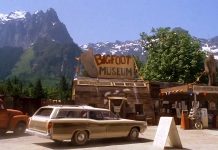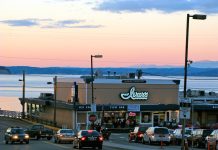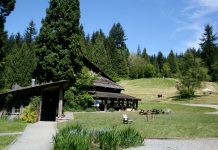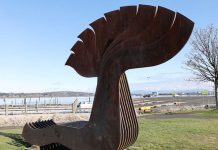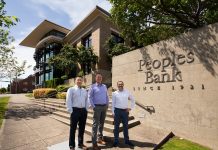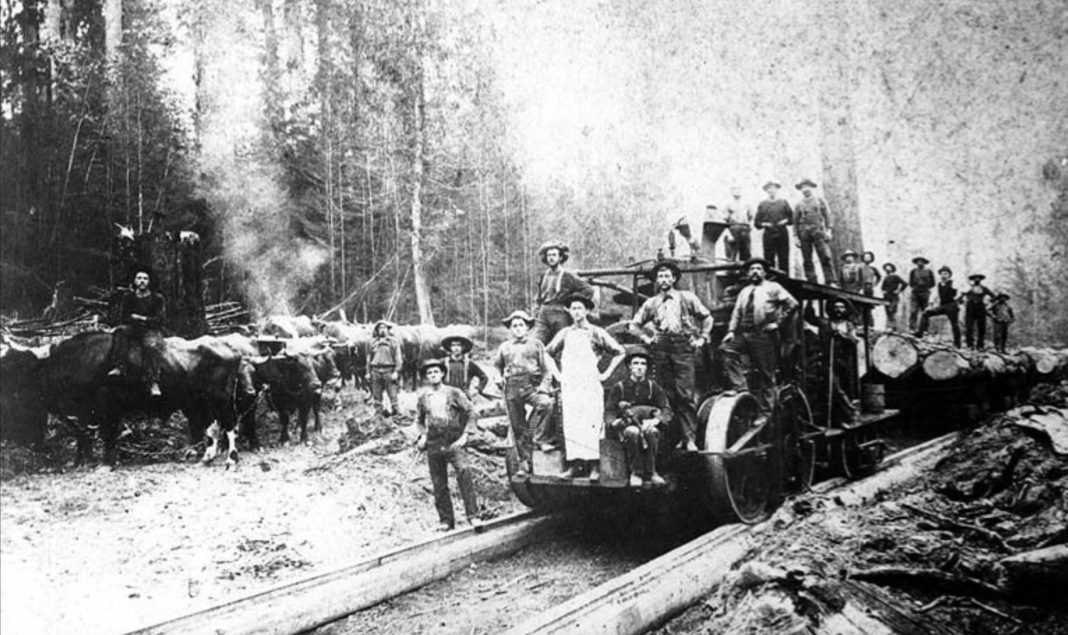In the late 19th century, three brothers—Alanson, Elhanan, and Hyrcanus Blackman—arrived in Snohomish, their vision as expansive as the towering Douglas firs that blanketed the landscape. Together, the Blackman brothers brought not just ambition but an unyielding will to conquer these colossal trees, transforming the dense forests into a mosaic of cleared paths and burgeoning mills. The silent giants of the region soon bore witness to their logging endeavors as their pioneering spirits planted the seeds of a thriving community. Today, the rich roots of the Blackman brother’s legacy run deeper, continually nourishing the very essence of Snohomish and reminding us of an era when timber was king.
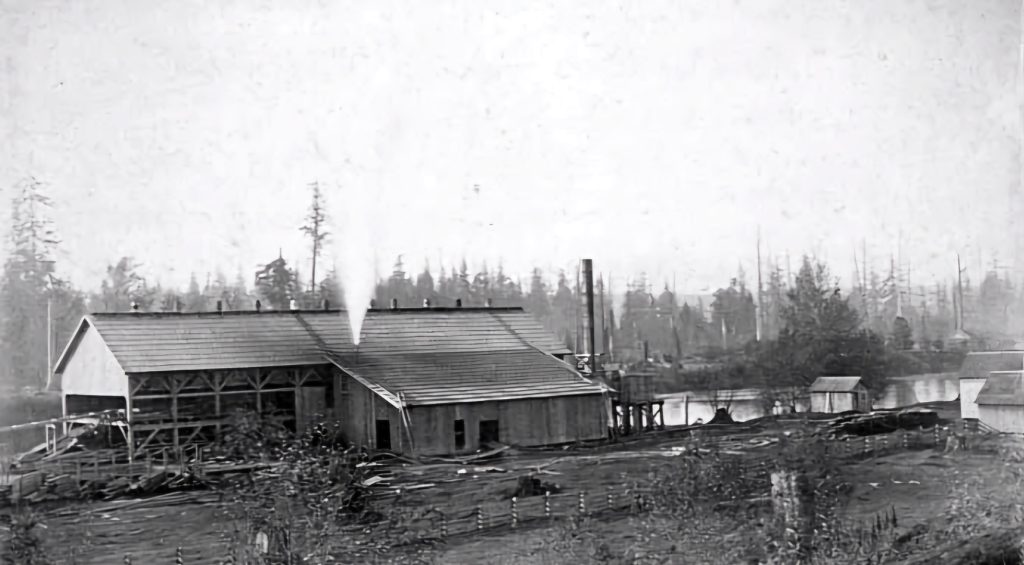
The Blackman Family Tree: Planting the First Seed
The story of the Blackman Brothers begins some 3,000 miles to the East and a few generations before, with their grandfather, Bradley, and a lumber mill of his own. In 1828, he became one of the region’s earliest settlers after acquiring Leonard’s Mill on Nicholas Stream after the owner’s passing. Under Bradley’s guidance, the new settlement prospered with lumbering and sawmilling as the principal industries.
By 1834, the town was officially incorporated and given the name Bradley in his honor, and the mill’s nearby stream was likewise renamed Blackman Stream. Both names have withstood the passage of time, firmly embedded in the town’s history like sturdy oaks on the forest floor. The mill was even rebuilt in the 1980s and is now the featured interpretative activity of the Maine Forest and Logging Museum.
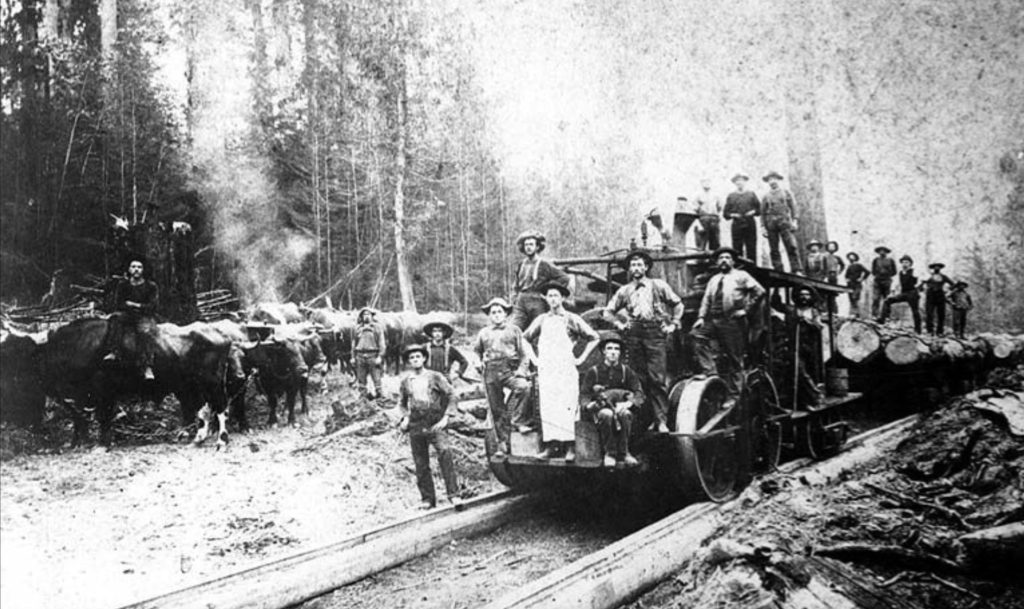
The Blackman Brothers Branch Out to Snohomish
They say you reap what you sow, and this sentiment would reign true for Bradley. For decades, the mill flourished, riding the waves of prosperity on the back of abundant timber resources. However, this thinking was fallible, and the resources were finite. When the relentless pursuit of growing the region’s timber industry resulted in over-logging, the trees and the mill’s fortunes dwindled.
By the 1870s, the failing fortunes of the Blackman Mill prompted three of Adam and Mary Howard Blackman’s six children to seek a fresh start. Along with their wives and one baby in tow, the aforementioned Blackman brothers migrated to the Pacific Northwest. Initially, they arrived at Port Gamble on the Kitsap Peninsula in 1872, inspired by fellow Bradley lumbermen Andrew Pope and William Talbot, who had already established a successful mill there.
For a while, they worked in Pope and Talbot’s logging camps before eventually leaving Port Gamble for Snohomish, platting a settlement of a dozen blocks about 12 miles upriver from Port Gardner (the future site of Everett). They settled along the Stillaguamish Lake, and it was here that the three Blackman brothers began plotting their homesteads and business future.
Within three years, they had built up a lucrative lumber mill, hiring ten men and operating along this small lake just north of Snohomish. In true traditional Blackman family fashion, the lumber mill wasn’t just established as Blackman Bros., but the Stillaguamish Lake was classically renamed Blackman Lake in 1875.
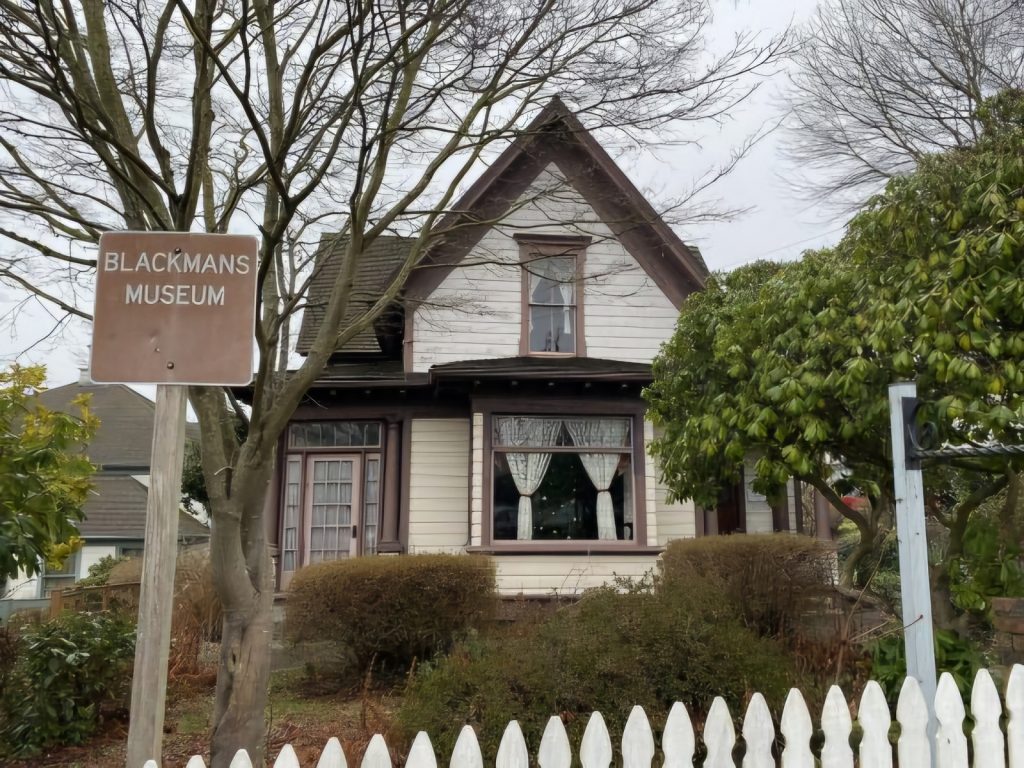
The Blackman Brothers Hew a Home in Snohomish
In 1878, Hyrcanus and Ella Blackman built their home on Avenue B, just two years after their logging operations began, establishing the family’s presence in Snohomish. Here, they would raise their children Clifford, born in 1884, and Eunice, born in 1887. His brothers, Elhanan and Alanson, soon joined them, building homes nearby with their wives, Francis and Eliza, respectively. Their eldest brother, William, established himself in Seattle’s lumber industry.
While his brothers focused primarily on the burgeoning logging industry, Hyrcanus took it upon himself to become active in politics in the territory. He was elected to the Washington Territorial Legislature in 1878. Over the years, he participated in civic affairs, served on the school board, and participated in several municipal committees.
Still, Hyrcanus never lost his entrepreneurial spirit and remained very much the business brains of the company. His enterprising nature led him to establish a mercantile store, which he supervised, a large sawmill along the Snohomish River in 1884, and a skating rink at the corner of Avenue B and First Street for the community to enjoy in the mid-1880s. Ever the visionary, the skating rink would be dismantled in 1886 to make room for Snohomish’s first four-star hotel, the three-story Penobscot Hotel that would open to the public in 1888.
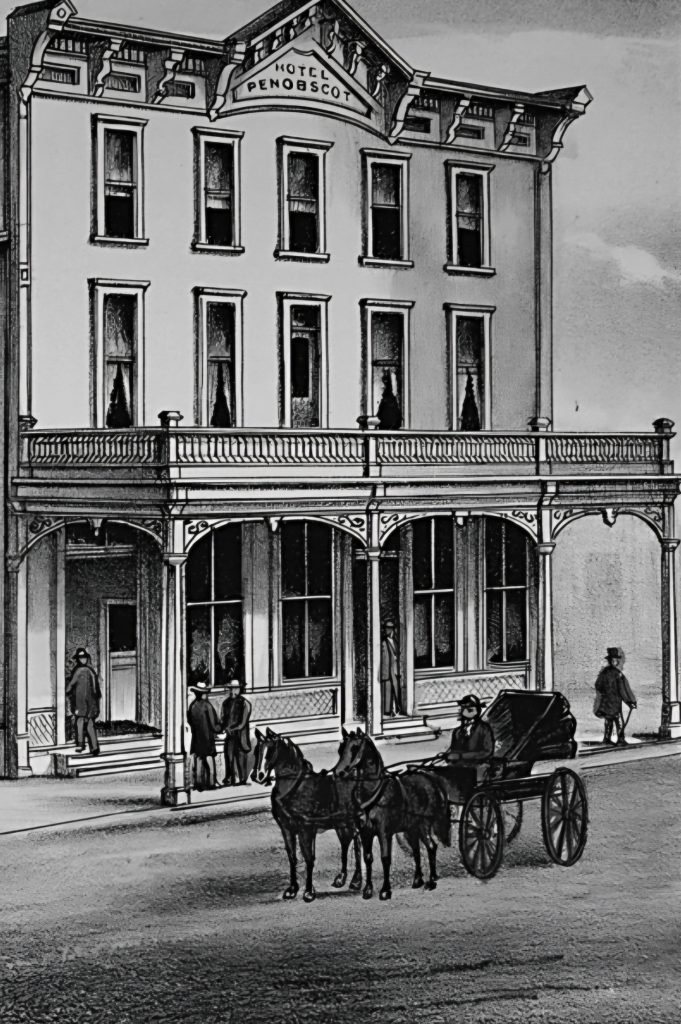
Elhanan and Alanson maintained things on the logging front, ultimately revolutionizing the industry by inventing several machines that modernized operations. Elhanan’s invention of the tripper shingle machine would be the key to streamlining production, making the mill one of the first in the region to produce surplus lumber for shipment to the East. This would prove especially advantageous after the railroad arrived in 1889, when they were the first to export red cedar shingles nationwide.
However, it would be the announcement of the Blackman brothers’ use of railroad cars for hauling logs from their camps that would rattle the local timber industry. Until then, they had been using oxen and mules on skid roads to haul logs from the woods to the river dump. Their 1883 patented logging locomotive would be the first of its kind in the county. It would be the first step into the future as the newfound innovation made logging faster and more efficient and even delighted the now-retired oxen.
From there on, it was full steam ahead for the Blackman brothers. When a fire in 1887 destroyed the Blackman brother’s first mill, it was quickly rebuilt and even expanded to employ 175 men. Business was booming, and so was the city. The town would officially be incorporated as a “village” the same year the Penobscot opened, and thanks to his reputation as a business leader and legislator, Hyrcanus would be appointed as a trustee. A loyal Democrat, Hyrcanus was surprisingly elected as the “First Mayor” of the newly incorporated Republican town, much to the upset of the city’s founder, E.C. Ferguson.
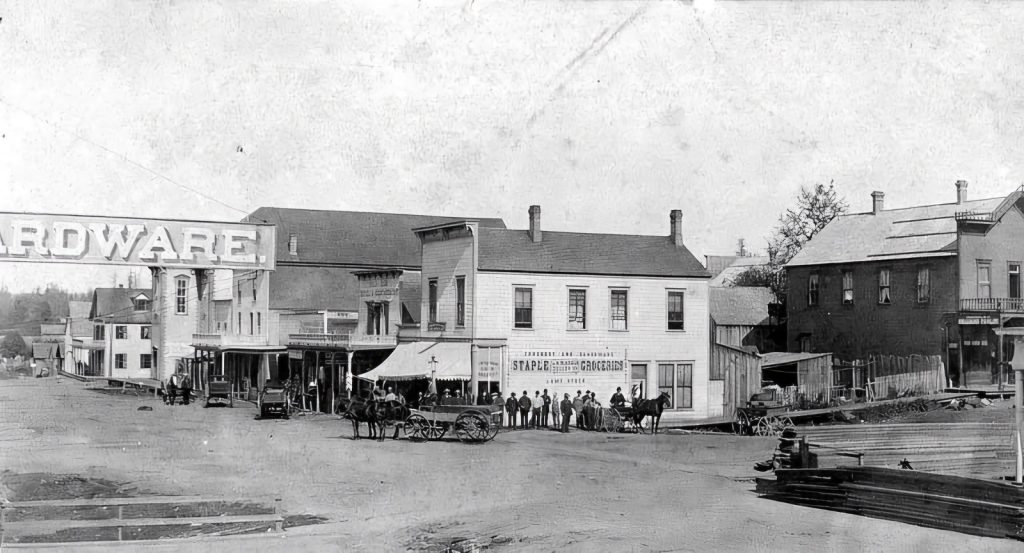
The Logging Legacy of the Blackman Brothers in Snohomish
Of the three Blackman homes that once graced Avenue B, Hyrcanus’s is the sole survivor. Today, it serves as a living testament to the family’s once-prominent presence, now lovingly maintained by the Snohomish Historical Society as the Blackman House Museum.
The museum offers a window into the past, allowing visitors to witness firsthand the lives and legacies of the Blackman family. Through exhibits and narratives, guests can explore the innovative spirit and entrepreneurial drive that characterized the Blackman Brothers’ endeavors, gaining a deeper appreciation for their contributions to the timber industry and the community’s growth and development in their role as the economic engine of early Snohomish.
From innovative logging techniques that sent massive logs hurtling down prepared chutes to establishing essential infrastructure, the Blackman Brothers’ influence carved out a lumbering legacy that continues to shape Snohomish today. Though the echoes of their axes have long since faded, their deeply rooted legacy serves as a reminder that the seeds of Snohomish were sown by the vision and hard work of yesterday’s pioneers, effectively branching the gap between the past and present.





